The glycemic index (GI) is a tool that measures how fast carbs in food raise blood sugar. It rates foods from 0 to 100. Low GI foods break down slowly, causing a more gradual rise in blood sugar. High GI foods lead to quick spikes.
 [1]
[1]【Sugar Defender™】Buy Now $69 | SugarDefender Official Site[2]
Buy Now Sugar Defender — Sugar Defender 100% Natural Formula. 60 Day Guarantee. Free Shipping. Only $49 per Bottle. Blood Sugar Defender Order 6 Bottles or 3 Bottles and Get 2 Free Bonuses.
Eating more low GI foods may help protect heart health and lower the risk of heart disease. This is because steady blood sugar levels put less stress on the body. Low GI diets may also help control weight and reduce inflammation, which are good for the heart.
Low GI foods include most fruits and veggies, beans, and whole grains. High GI foods are often highly processed, like white bread. Choosing more low GI options as part of a balanced diet can support heart health over time.
Key Takeaways
- The glycemic index measures how quickly carbs in food raise blood sugar levels
- Low GI foods may help protect heart health by causing smaller blood sugar spikes
- Eating more low GI foods like fruits, veggies, and whole grains can support heart health
Understanding the Glycemic Index
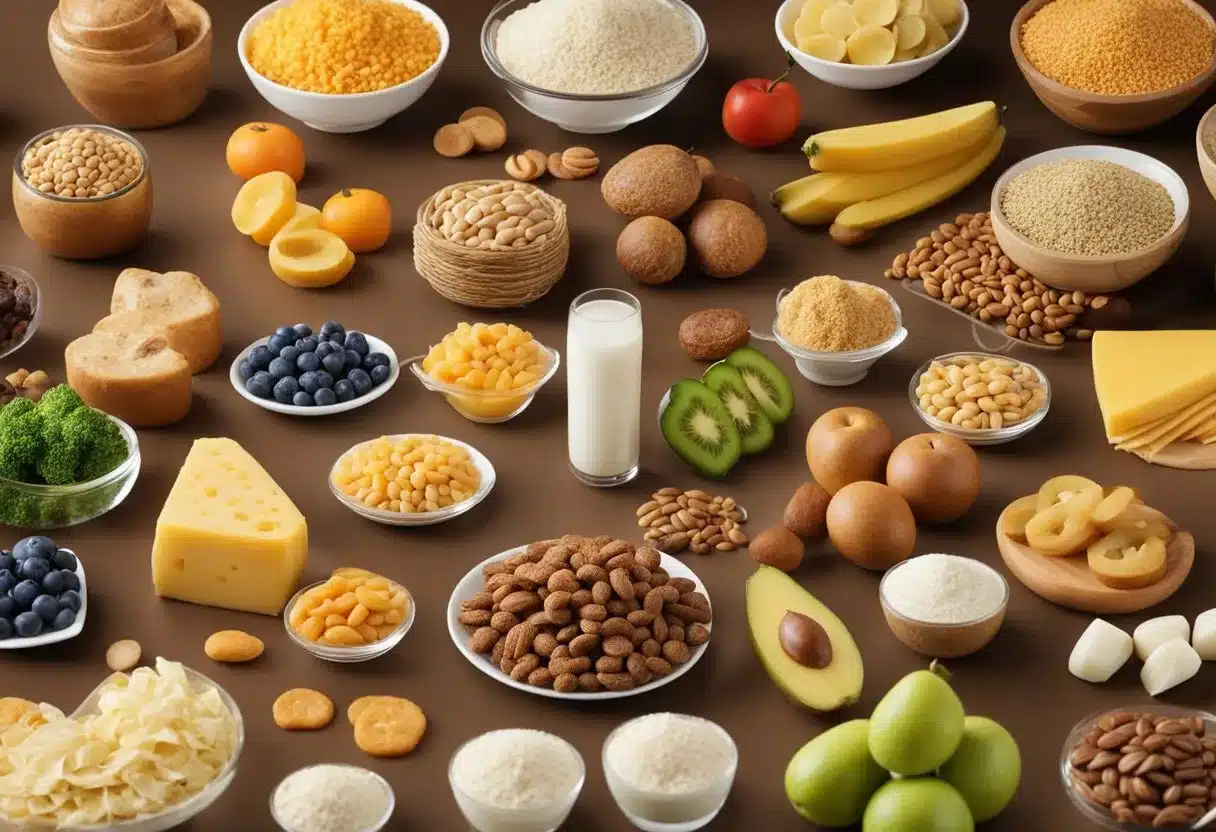
The glycemic index is a tool that measures how foods affect blood sugar levels. It helps people make informed choices about carbohydrates in their diet.
Definition and Importance
The glycemic index (GI) ranks foods on a scale from 0 to 100 based on how quickly they raise blood sugar. Foods with a high GI cause rapid spikes in blood glucose. Low GI foods lead to more gradual increases.
The GI is important for managing blood sugar levels. It can help people with diabetes control their condition. It may also play a role in heart health and weight management.
Foods are classified into three GI categories:
- Low GI: 55 or less
- Medium GI: 56-69
- High GI: 70 or more
Glycemic Index vs. Glycemic Load
While the GI measures quality of carbohydrates, glycemic load (GL) considers quantity too. GL takes into account both the GI of a food and the amount of carbohydrates in a serving.
To calculate GL, multiply the GI by the grams of carbohydrates and divide by 100. For example:
- An apple: GI 40, 15g carbs. GL = (40 x 15) / 100 = 6
- A slice of white bread: GI 75, 15g carbs. GL = (75 x 15) / 100 = 11.25
GL provides a more complete picture of a food’s impact on blood sugar. It’s especially useful when comparing foods with similar GI but different carb amounts.
Factors Influencing the Glycemic Index of Foods
Several factors can affect a food’s GI:
- Processing: Refined grains have a higher GI than whole grains.
- Ripeness: Ripe fruits have a higher GI than unripe ones.
- Cooking method: Longer cooking times can increase GI.
- Fiber content: High-fiber foods tend to have a lower GI.
- Fat and acid content: These can slow digestion and lower GI.
The type of sugar in a food also matters. Fructose has a lower GI than glucose. This is why some fruits have a lower GI despite their sweetness.
It’s important to note that the GI of a food can change when eaten as part of a meal. Combining high and low GI foods can help balance the overall glycemic impact.
The Glycemic Index of Common Foods
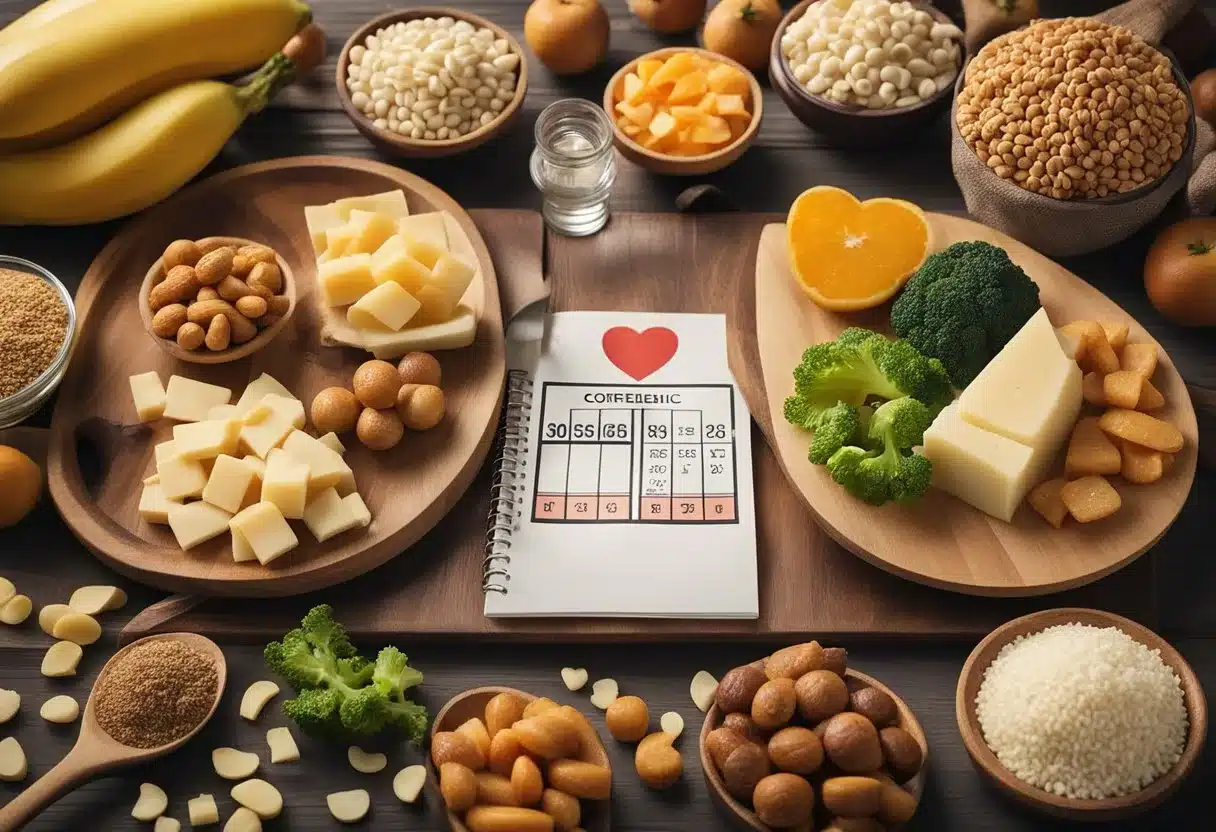
The glycemic index (GI) ranks foods based on how they affect blood sugar levels. Foods are grouped into low, medium, and high GI categories. This system helps people make informed choices about their diet.
Categorization of Foods by GI Values
Foods are sorted into three main GI groups:
- Low GI (0-55): Most fruits and vegetables, beans, minimally processed grains, pasta, low-fat dairy foods, and nuts
- Medium GI (56-69): White and sweet potatoes, corn, white rice, couscous
- High GI (70+): White bread, sugary foods, processed snacks
Bananas have a GI score of about 50[3], placing them in the low GI category. Whole grains and legumes also tend to have lower GI values. These foods cause a slower, more gradual rise in blood sugar.
High GI Foods and Health Risks
High GI foods can cause rapid spikes in blood sugar levels. This may lead to:
- Increased hunger and overeating
- Higher risk of type 2 diabetes
- Greater chance of heart disease
White bread and potatoes are examples of high GI foods. They are quickly digested and absorbed, causing a fast rise in blood glucose. Eating too many high GI foods regularly can strain the body’s insulin response.
Low GI Alternatives
Choosing low GI foods can help manage blood sugar and reduce health risks. Some good options include:
- Whole grains instead of refined grains
- Sweet potatoes instead of white potatoes
- Brown rice instead of white rice
- Fruits and vegetables as snacks
Beans and lentils are excellent low GI choices. They are rich in fiber and protein, which slow down digestion. Nuts and seeds also have low GI values and provide healthy fats. Swapping high GI foods for lower GI alternatives can improve overall diet quality and health.
Glycemic Index and Nutritional Content
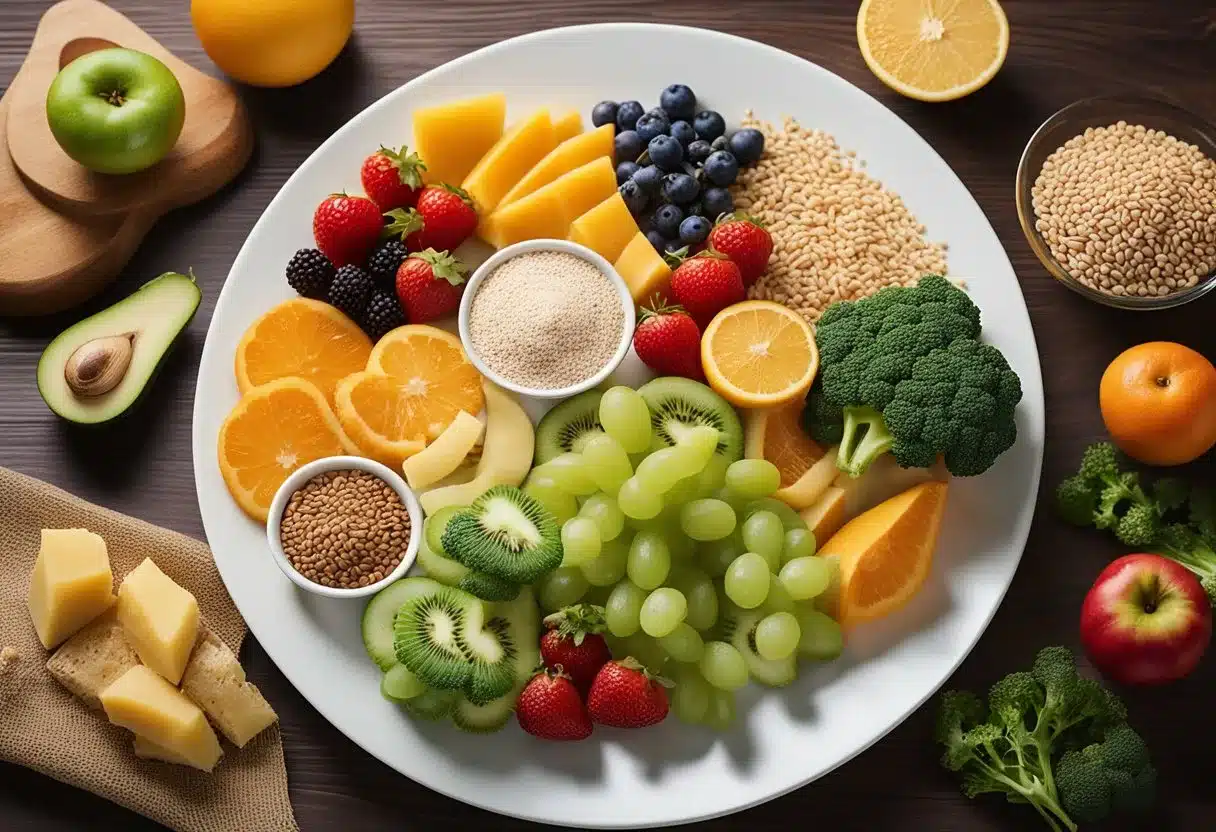
The glycemic index (GI) of foods relates closely to their nutritional makeup. Foods with different GI values often have varying nutrient profiles that can impact health.
Carbohydrates and Fiber in Diet
Carbohydrates are a key factor in a food’s GI rating. Low GI foods (55 or less) often contain complex carbs that digest slowly. These include most fruits, vegetables, beans, and minimally processed grains.
Dietary fiber plays a big role in lowering a food’s GI. It slows digestion and helps control blood sugar spikes. Whole grains, legumes, and many vegetables are high in fiber and have low GIs.
Foods high in refined carbs and low in fiber tend to have higher GIs. White bread, sugary cereals, and processed snacks fall into this category.
Proteins, Fats, and Carbs Interplay
The mix of nutrients in a meal affects its overall glycemic impact. Proteins and fats can lower the GI of a meal when eaten with carbs.
Lean meats, fish, eggs, and dairy products add protein without raising blood sugar. Healthy fats from nuts, seeds, and olive oil can also help balance a meal’s GI.
The glycemic load (GL)[4] considers both the quality and quantity of carbs in food. It gives a more complete picture of a food’s effect on blood sugar.
Vitamins and Minerals in Low GI Foods
Many low GI foods are rich in essential vitamins and minerals. Fruits and vegetables provide vitamins A and C, potassium, and other antioxidants.
Whole grains offer B vitamins, iron, and magnesium. These nutrients support heart health, energy production, and overall wellness.
Legumes like beans and lentils are low GI powerhouses. They pack fiber, protein, folate, and minerals into each serving.
Nuts and seeds have low GIs and provide vitamin E, zinc, and healthy fats. They make great additions to a balanced diet.
Impact of Glycemic Index on Heart Health
The glycemic index of foods can play a key role in heart health. It affects risk factors for heart disease, cholesterol levels, and overall cardiovascular wellness. Understanding these connections can help inform dietary choices.
Glycemic Index and Heart Disease Risk
Studies link high glycemic index diets to increased heart disease risk. Foods with a high glycemic index cause rapid spikes in blood sugar. This leads to higher insulin levels and inflammation. Over time, these effects may damage blood vessels and the heart.
Low glycemic index foods have a more gradual effect on blood sugar. They put less stress on the body’s systems. This can help protect heart health long-term.
Whole grains, legumes, and most fruits have lower glycemic indexes. Refined grains and sugary foods tend to have higher glycemic indexes. Choosing more low-GI options may lower heart disease risk.
Glycemic Index and Cholesterol Levels
The glycemic index of foods can impact cholesterol levels in the blood. High-GI diets tend to raise LDL (“bad”) cholesterol. They may also lower HDL (“good”) cholesterol.
Low-GI diets often have the opposite effect. They can help:
- Lower total cholesterol
- Reduce LDL cholesterol
- Increase HDL cholesterol
These changes in blood lipids are important for heart health. Better cholesterol profiles are linked to lower risk of coronary heart disease.
Fiber content plays a role too. Many low-GI foods are high in fiber. Dietary fiber helps remove cholesterol from the body.
Lifestyle and Dietary Recommendations
To support heart health, experts suggest:
- Choose more low-GI foods like vegetables, fruits, and whole grains
- Limit high-GI foods such as white bread, sugary snacks, and soft drinks
- Include lean proteins and healthy fats in meals
- Stay physically active
A balanced diet with a low glycemic load may help prevent cardiovascular disease. This means eating a variety of nutritious foods, not just focusing on glycemic index alone.
Reading food labels can help identify lower-GI options. Cooking methods matter too. Al dente pasta has a lower GI than overcooked pasta, for example.
Small changes can add up. Swapping some high-GI foods for lower-GI alternatives may benefit heart health over time.
Glycemic Index, Diabetes, and Blood Sugar Management
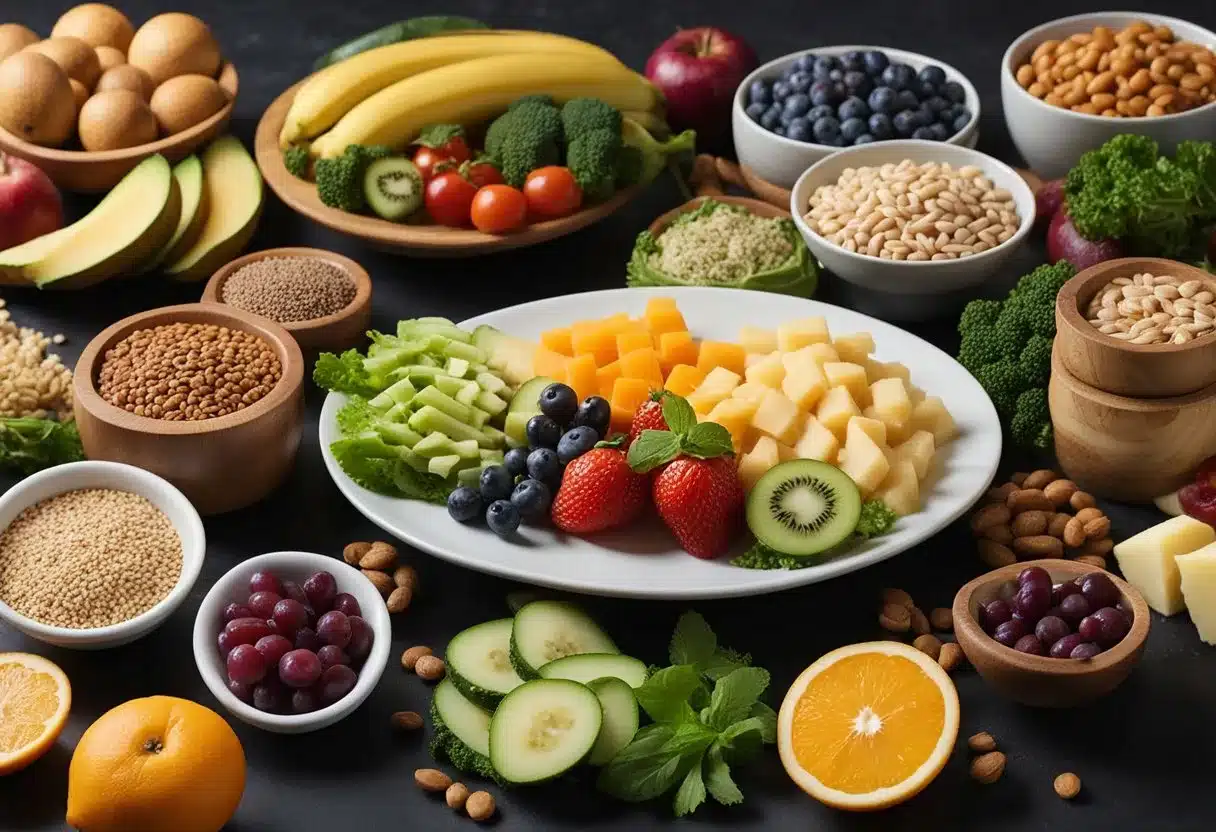
The glycemic index plays a key role in managing diabetes and blood sugar levels. It helps people make smart food choices to control their glucose and insulin.
Type 2 Diabetes and Glycemic Control
Glycemic index is crucial for type 2 diabetes management. It helps people pick foods that won’t spike their blood sugar.
Low GI foods release glucose slowly. This leads to more stable blood sugar levels. It can improve long-term blood sugar control in people with diabetes.
High GI foods cause rapid blood sugar spikes. These spikes are harmful for people with diabetes. They can lead to poor glucose control over time.
Choosing more low GI foods may lower the risk of type 2 diabetes[5]. It can also help manage existing diabetes.
Insulin Resistance and Glycemic Index
Insulin resistance is a key factor in type 2 diabetes. The glycemic index can affect insulin levels and insulin resistance.
High GI foods cause big spikes in blood sugar. This forces the body to release more insulin. Over time, this can lead to insulin resistance.
Low GI foods cause smaller, slower rises in blood sugar. This means less insulin is needed. It can help improve insulin sensitivity over time.
Choosing more low GI foods may help prevent or manage insulin resistance. This is key for diabetes prevention and treatment.
Blood Sugar Levels and Glycemic Index
The glycemic index directly impacts blood sugar levels[6]. It shows how quickly foods raise blood glucose.
High GI foods cause rapid, high spikes in blood sugar. These spikes can be dangerous for people with diabetes. They can lead to high blood sugar symptoms.
Low GI foods cause smaller, slower rises in blood sugar. This leads to more stable levels throughout the day. It can help avoid both high and low blood sugar.
Glycemic load (GL) is also important. It takes into account both the GI and the amount of carbs in a food. This gives a more complete picture of a food’s impact on blood sugar.
Glycemic Index, Obesity, and Metabolic Health
The glycemic index (GI) plays a key role in weight control and chronic disease risk. It affects how foods impact blood sugar, appetite, and fat storage in the body.
Glycemic Index and Weight Control
High-GI foods may promote weight gain and obesity. They cause rapid spikes in blood sugar and insulin. This can increase hunger and fat storage.
Low-GI foods help control appetite. They lead to slower, steadier rises in blood sugar. This keeps people feeling full longer.
Studies show low-GI diets can aid weight loss. They may also make it easier to maintain a healthy weight long-term.
Choosing more low-GI options like vegetables, fruits, and whole grains can support weight control efforts.
Glycemic Index and Chronic Diseases
The GI of foods affects more than just weight. It also impacts risk for several chronic health issues.
Type 2 diabetes[7] is strongly linked to high-GI diets. These diets stress the body’s ability to control blood sugar over time.
Heart disease risk may also rise with high-GI eating patterns. They can worsen cholesterol levels and inflammation.
Some cancers show connections to high-GI diets as well. The reasons aren’t fully clear, but insulin and growth factors may play a role.
Choosing more low-GI foods could help lower risk for these chronic diseases.
Starchy Foods and Obesity Prevention
Starchy foods can have very different effects on health based on their GI. Some may promote obesity, while others could help prevent it.
High-GI starches like white bread and potatoes can lead to blood sugar spikes. This may increase hunger and encourage overeating.
Low-GI starches such as beans and whole grains have the opposite effect. They provide steady energy and promote fullness.
Swapping high-GI starches for low-GI options is a simple way to improve diet quality. It can aid in weight control and chronic disease prevention.
Pairing starches with protein or healthy fats can also lower their overall glycemic impact.
Glycemic Index in Everyday Life
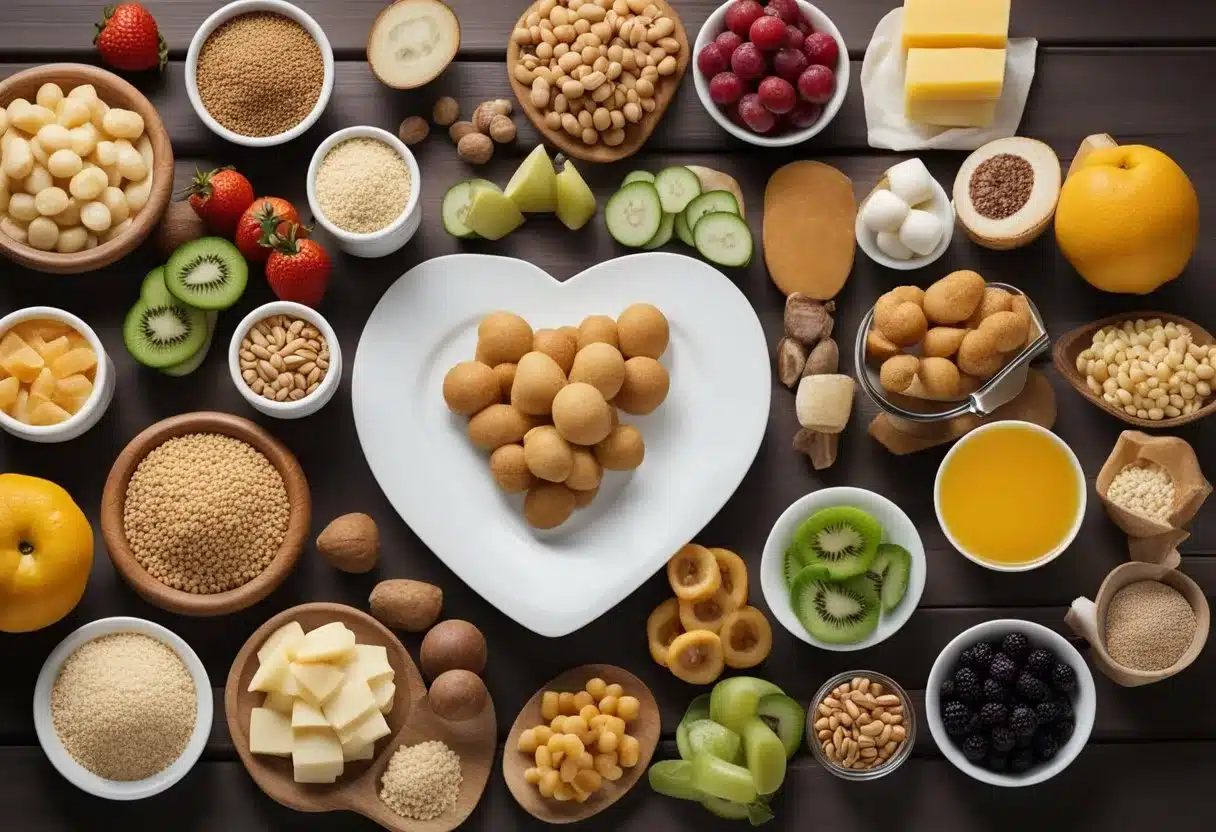
The glycemic index plays a key role in daily food choices and health habits. It affects meal planning, grocery shopping, and even exercise routines.
Planning a Low Glycemic Diet
A low glycemic diet focuses on foods that don’t cause big spikes in blood sugar. Whole-grain foods[8] are great choices. They digest slowly and keep blood sugar steady.
Good low-glycemic options include:
- Oats
- Quinoa
- Brown rice
- Lentils
- Most vegetables
Dairy can fit into a low glycemic diet too. Yogurt and milk have protein that helps slow digestion.
It’s smart to limit high-glycemic foods like white bread and sugary snacks. These can cause quick blood sugar rises.
Consumer Choices and Food Industry
The food industry offers many low-glycemic products now. Shoppers can find special breads, cereals, and snacks.
Reading labels is key. Look for:
- Fiber content
- Added sugars
- Whole grain ingredients
Fast food[4] often has a high glycemic index. It’s best to choose carefully when eating out.
Sugar-sweetened drinks are very high glycemic. Water, unsweetened tea, or drinks with artificial sweeteners are better picks.
Some food makers add extra fiber or use sugar substitutes to lower a product’s glycemic index.
Physical Activity and Glycemic Control
Exercise helps control blood sugar levels. It makes cells more sensitive to insulin.
Regular activity can:
- Lower the overall glycemic impact of meals
- Help maintain a healthy weight
- Improve heart health
Even a short walk after eating can help manage blood sugar spikes.
Timing matters too. Working out before a meal can make the body handle carbs better.
For best results, people should aim for a mix of cardio and strength training exercises.
Conclusions and Recommendations
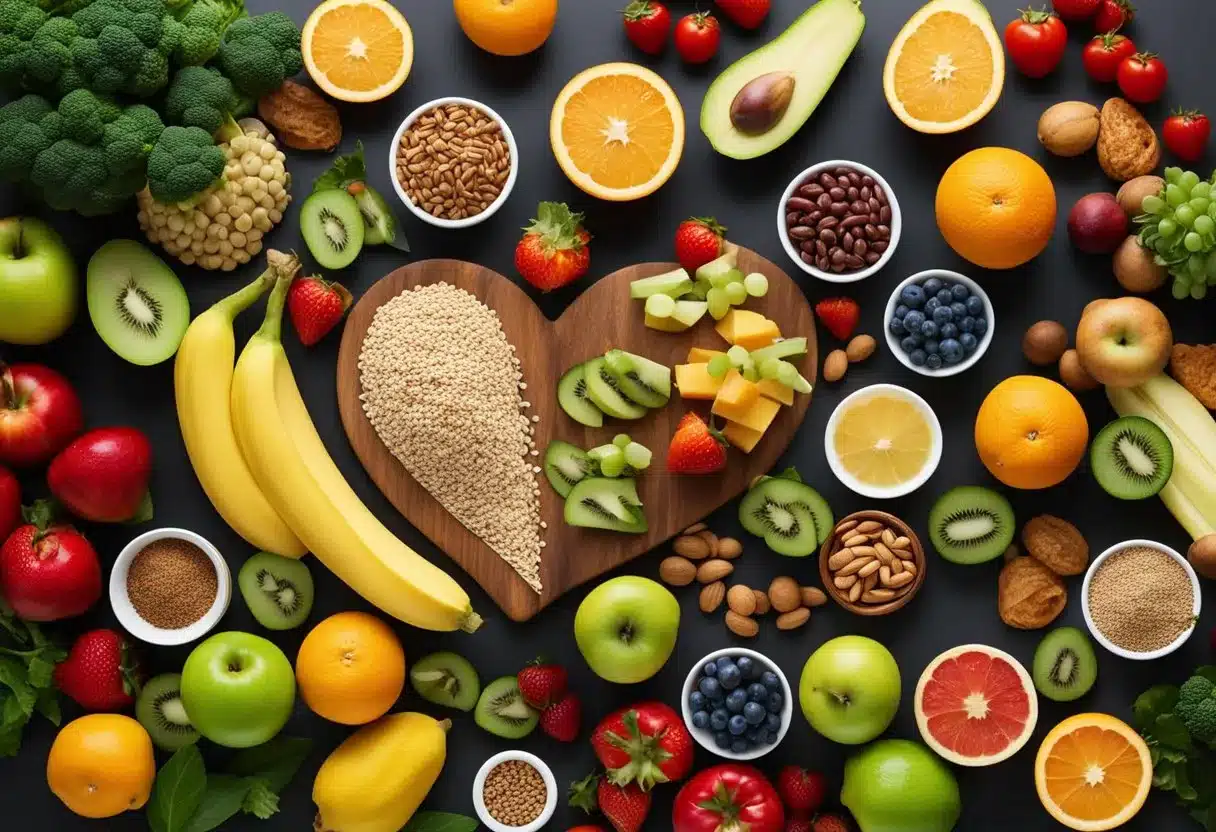
The glycemic index (GI) of foods can impact heart health. Diets with a lower GI may help reduce the risk of cardiovascular disease.
Choosing low-GI foods can be part of a heart-healthy eating plan. These foods include whole grains, legumes, and most fruits and vegetables.
High-GI foods like refined grains and sugary snacks should be limited. They can cause rapid spikes in blood sugar levels.
Dietary recommendations:
- Eat more whole, unprocessed foods
- Choose complex carbohydrates over simple sugars
- Include lean proteins and healthy fats in meals
Balancing carbohydrate intake with other nutrients is key. This helps maintain stable blood sugar levels throughout the day.
Regular physical activity[8] is also important for heart health. It can improve insulin sensitivity and help control blood sugar.
Consulting a healthcare provider or registered dietitian is advised. They can offer personalized guidance on using the glycemic index for better heart health.
Remember, the glycemic index is just one tool for healthy eating. A well-rounded approach to nutrition and lifestyle is best for overall heart health.
References
- Sugar Defender. https://8e81c8fyct2y4n4c8aiki8qmct.hop.clickbank.net/?tid=GIheart1 Accessed October 31, 2025
- Sugar Defender. https://8d635xcr2v1w4w7c7ddgjbopbg.hop.clickbank.net?custom=2&pid=new&tid=GIheart2 Accessed October 31, 2025
- The glycemic index can be a helpful chart, but has its limits. https://mcpress.mayoclinic.org/nutrition-fitness/the-glycemic-index-can-be-a-helpful-chart-but-has-its-limits/ Accessed October 31, 2025
- The glycemic load (GL). https://www.clevelandheartlab.com/wp-content/uploads/2021/03/Quest-CHL-Glycemic-Index.pdf Accessed October 31, 2025
- A good guide to good carbs: The glycemic index. https://www.health.harvard.edu/healthbeat/a-good-guide-to-good-carbs-the-glycemic-index Accessed October 31, 2025
- Diabetes management: How lifestyle, daily routine affect blood sugar. https://www.mayoclinic.org/diseases-conditions/diabetes/in-depth/diabetes-management/art-20047963 Accessed October 31, 2025
- The Health Effects of Low Glycemic Index and Low Glycemic Load Interventions on Prediabetes and Type 2 Diabetes Mellitus: A Literature Review of RCTs. https://www.ncbi.nlm.nih.gov/pmc/articles/PMC10746079/ Accessed October 31, 2025
- Glycemic Index, Glycemic Load, and Cardiovascular Disease: The Importance of Carbohydrate Quality. https://www.acc.org/latest-in-cardiology/articles/2021/05/26/13/16/glycemic-index-glycemic-load-and-cardiovascular-disease Accessed October 31, 2025
